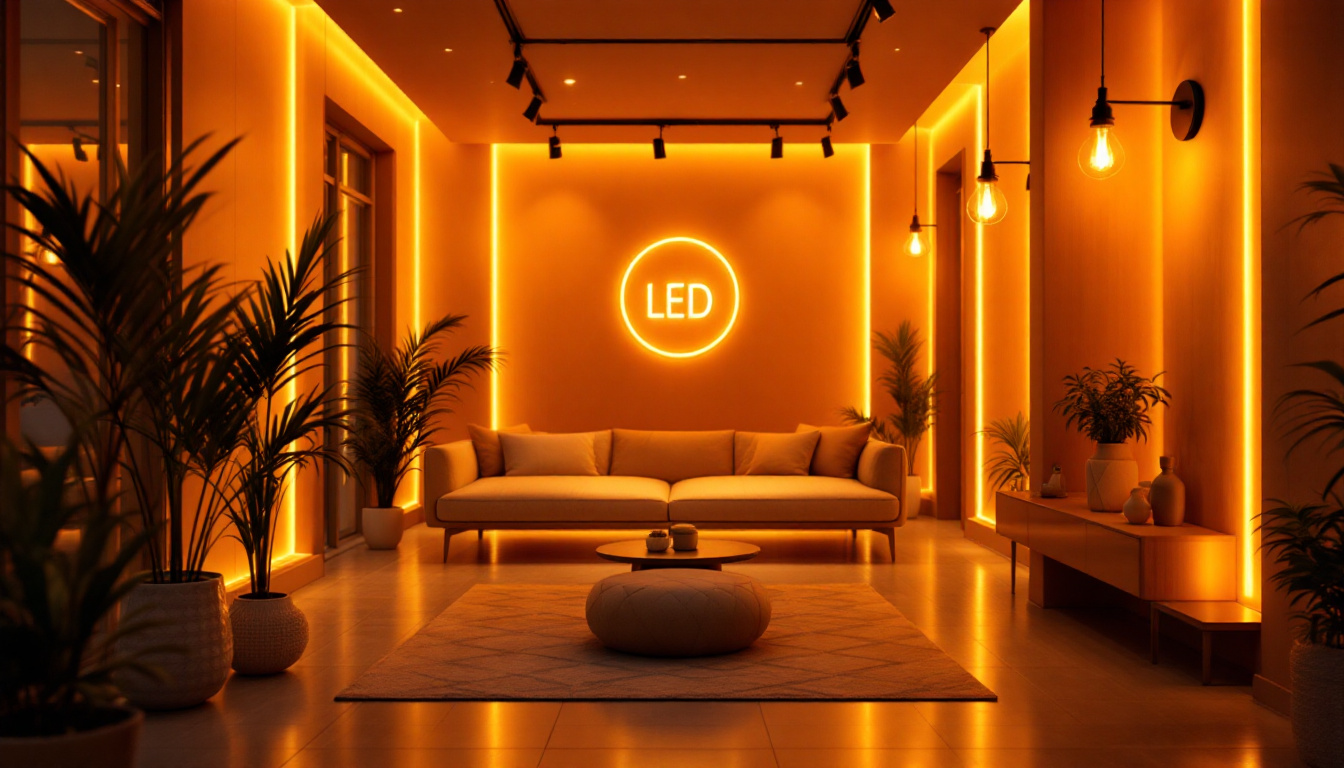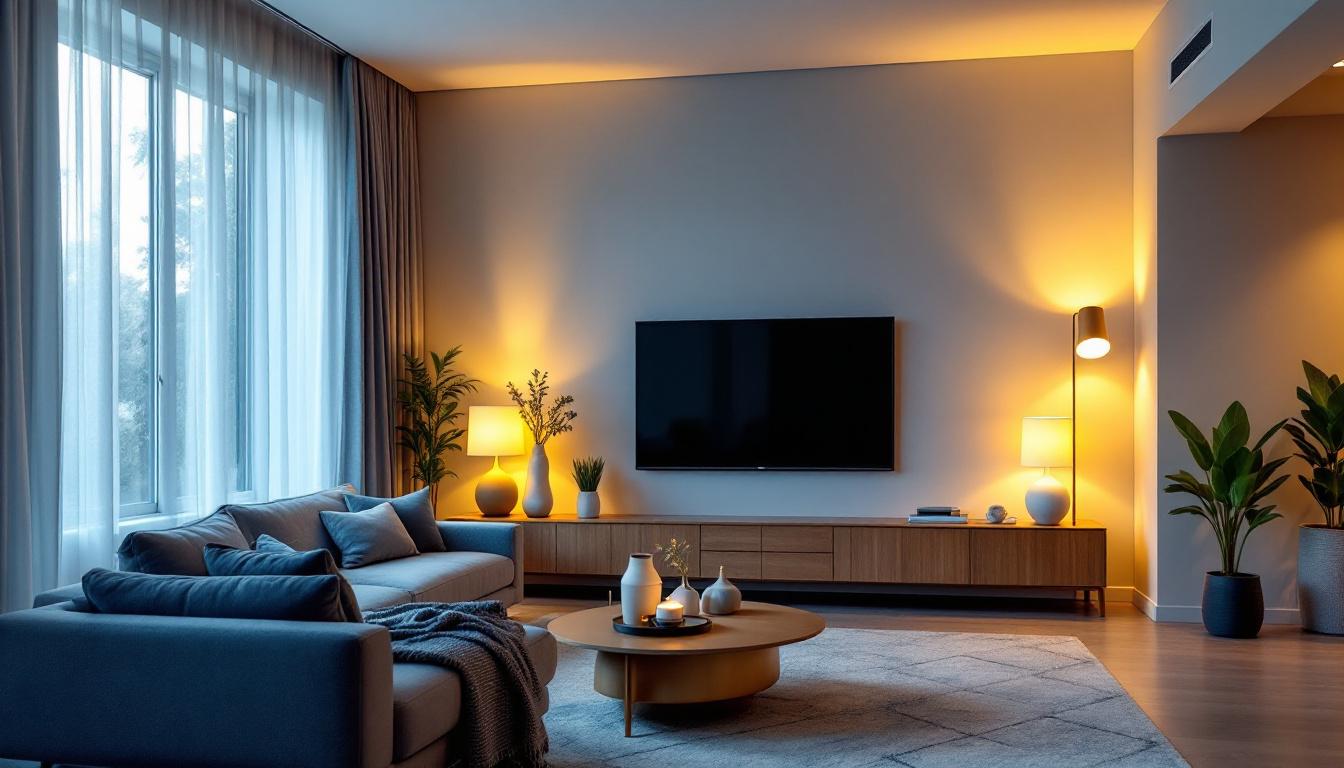
In the ever-evolving landscape of lighting design, amber LED lights are emerging as a transformative force. As technology advances, the demand for innovative and efficient lighting solutions grows. Amber LEDs not only offer aesthetic appeal but also provide functional benefits that can enhance both residential and commercial spaces. This article explores the significance of amber LED lights in modern lighting design and installation, emphasizing their advantages and future potential.
Amber LED lights have gained traction due to their unique properties and versatility. Unlike traditional lighting options, amber LEDs provide a warm, inviting glow that can create a soothing atmosphere. This characteristic makes them particularly appealing for various applications, from homes to hospitality venues. The soft illumination of amber lights can enhance the aesthetic appeal of a space, making it feel cozier and more welcoming, which is why many interior designers are incorporating them into their projects to achieve a desired ambiance.
The amber light spectrum is distinct from the cooler hues typically associated with standard LED lights. By emitting light in the amber range, these LEDs can reduce glare and enhance visual comfort. This quality is especially beneficial in environments where prolonged exposure to artificial lighting is common, such as offices and retail spaces. Moreover, the amber spectrum is less disruptive to circadian rhythms, making it a preferred choice for areas where people spend long hours, as it promotes a more natural and relaxed state of mind.
One of the most compelling reasons to consider amber LED lights is their energy efficiency. Compared to incandescent and fluorescent bulbs, amber LEDs consume significantly less power, leading to reduced energy bills. Additionally, their long lifespan means fewer replacements, which translates to lower maintenance costs over time. The durability of amber LEDs also means they are less likely to break compared to traditional bulbs, making them a safer option in both residential and commercial settings. This resilience is particularly advantageous in outdoor applications, where exposure to the elements can compromise the integrity of less robust lighting solutions.
As sustainability becomes a priority in lighting design, amber LEDs shine as an eco-friendly option. They contain no harmful substances, such as mercury, and their reduced energy consumption contributes to a smaller carbon footprint. For lighting contractors, promoting amber LED technology aligns with the growing demand for sustainable building practices. Furthermore, the manufacturing process of amber LEDs often emphasizes the use of recyclable materials, further minimizing environmental impact. As more consumers become aware of their ecological footprint, the appeal of amber LEDs is likely to continue rising, making them a smart choice for both new constructions and retrofitting projects aimed at enhancing energy efficiency.
The versatility of amber LED lights allows them to be integrated into a wide range of applications. From residential settings to commercial installations, their adaptability makes them a valuable addition to any lighting design project.
In residential spaces, amber LED lights can create a warm and inviting ambiance. They are ideal for living rooms, bedrooms, and dining areas, where a cozy atmosphere is desired. By using dimmable amber LEDs, homeowners can easily adjust the lighting to suit different moods and occasions. Additionally, these lights can be strategically placed in fixtures such as sconces or recessed lighting to highlight architectural features, adding depth and character to the space. The soothing glow of amber light can also be beneficial for relaxation, making it a popular choice for home theaters or reading nooks, where a calming environment is essential.
For commercial and retail environments, amber LED lights can enhance product displays and create an inviting atmosphere for customers. Their warm glow can make products appear more appealing, encouraging consumer engagement. Moreover, the energy efficiency of amber LEDs can help businesses reduce operational costs while maintaining a high-quality lighting experience. Retailers often use amber lighting to create a specific brand identity, as the color can evoke feelings of warmth and trust. Furthermore, in restaurants and cafes, amber LED lights can set the mood for dining experiences, making patrons feel more relaxed and comfortable, which can lead to longer visits and increased sales.
Amber LED lights are also gaining popularity in outdoor lighting applications. They can be used in landscape lighting, pathway illumination, and architectural accents. The warm light emitted by amber LEDs can enhance the beauty of outdoor spaces while providing safety and security. In addition to their aesthetic benefits, amber lights are less disruptive to nocturnal wildlife, making them an eco-friendly choice for gardens and parks. They can be used in outdoor seating areas to create a cozy atmosphere for evening gatherings, or along pathways to guide guests safely. Moreover, amber LEDs can be integrated into smart lighting systems, allowing homeowners to control their outdoor lighting remotely, adding convenience and efficiency to outdoor entertaining and security measures.
When incorporating amber LED lights into a project, several design considerations must be taken into account. Understanding the unique characteristics of amber lighting can help lighting contractors create effective and aesthetically pleasing installations.
Amber LEDs typically have a color temperature ranging from 1800K to 3000K, which is significantly warmer than traditional white LEDs. When designing a lighting scheme, it is essential to consider the desired ambiance and select the appropriate brightness levels. This can be achieved through the use of dimmers and smart lighting controls, allowing for greater flexibility in lighting design.
Effective placement and layering of amber LED lights can enhance the overall lighting design. By strategically positioning fixtures, contractors can create focal points and highlight architectural features. Layering different types of lighting, such as ambient, task, and accent lighting, can further enhance the functionality and aesthetics of a space.
As smart home technology continues to advance, integrating amber LED lights into smart systems can provide added convenience and control. Contractors should consider recommending smart bulbs or fixtures that can be easily integrated into existing home automation systems. This allows homeowners to customize their lighting experience and adapt to changing needs.
While amber LED lights offer numerous benefits, there are challenges that lighting contractors may encounter during installation. Understanding these challenges and their potential solutions can ensure successful project outcomes.
One challenge associated with amber LEDs is their color rendering capabilities. Some amber LEDs may not accurately render colors, which can be a concern in spaces where color accuracy is crucial, such as art galleries or design studios. To address this, contractors should select high-quality amber LEDs with a high Color Rendering Index (CRI) to ensure colors appear true to life.
Another consideration is heat management. While LED technology is generally more efficient than traditional lighting, improper installation can lead to heat buildup, affecting performance and lifespan. Ensuring adequate ventilation and using fixtures designed for heat dissipation can help mitigate this issue.
Lighting contractors must also navigate regulatory compliance when installing amber LED lights. Local building codes and energy efficiency standards may dictate specific requirements for lighting installations. Staying informed about these regulations and ensuring compliance can prevent potential setbacks during the installation process.
As technology continues to advance, the future of amber LED lighting looks promising. Innovations in LED technology and design will likely lead to even more efficient and versatile lighting solutions. For lighting contractors, staying ahead of these trends is essential to remain competitive in the industry.
Ongoing research and development in LED technology are expected to yield improvements in efficiency, color quality, and lifespan. These advancements will enhance the appeal of amber LEDs, making them an even more attractive option for a wide range of applications. Contractors who embrace these innovations will be better positioned to meet the evolving needs of their clients.
As the push for renewable energy sources continues, integrating amber LED lighting with solar power systems is becoming increasingly feasible. This combination can provide sustainable lighting solutions for both residential and commercial properties, reducing reliance on traditional energy sources and lowering overall energy costs.
The future of lighting design is leaning towards customization and personalization. With advancements in smart technology, homeowners and businesses will have greater control over their lighting environments. This trend will allow for tailored lighting experiences that meet individual preferences and needs, further solidifying the role of amber LEDs in modern lighting design.
Amber LED lights are not just a passing trend; they represent a significant shift in lighting design and installation. Their unique properties, energy efficiency, and versatility make them an ideal choice for a wide range of applications. For lighting contractors, understanding the benefits and challenges of amber LEDs is essential for creating successful projects that meet the demands of today’s consumers.
As the industry continues to evolve, embracing amber LED technology will be crucial for staying competitive. By leveraging the advantages of amber lighting and staying informed about emerging trends, lighting contractors can position themselves as leaders in the field of lighting design and installation. The future of lighting is bright, and amber LEDs are at the forefront of this exciting evolution.
Ready to harness the potential of amber LED lights and elevate your lighting installations? At LumenWholesale, we provide lighting contractors with the highest quality, spec-grade amber LED products at unbeatable wholesale prices. Say goodbye to local distributor markups and hello to superior lighting solutions that meet rigorous industry standards. With our commitment to affordability and convenience, you’ll enjoy free shipping on bulk orders, ensuring you get the best value without any hidden costs. Make your next project shine with the perfect blend of quality, efficiency, and cost-effectiveness. Wholesale Lighting at the Best Value is just a click away—experience the LumenWholesale difference today.

Discover expert insights from top lighting contractors on mastering home lighting control.

Discover the transformative power of energy-efficient interior garage light fixtures.

Discover the ins and outs of movement detector lights with our comprehensive guide tailored for lighting contractors.

Discover expert tips for lighting contractors on selecting the perfect bulb brightness for hair salons.